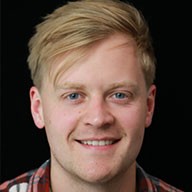이 콘텐츠는 어떠셨나요?
CattleEye가 선구적인 AI를 통해 농부와 가축의 삶을 개선하는 방법
기후 변화부터 천연 자원의 남용, 에너지 보존, 폐기물 관리, 수질 오염, 삼림 벌채에 이르기까지 지속 가능성은 모든 사람에게 있어 피할 수 없는 책임이 분명합니다. 대기업 차원에서는 혁신이 느릴 수 있는 곳에서 스타트업이 파괴적 사고와 선구적인 솔루션을 주도하는 경우가 늘고 있습니다. 벤처 캐피탈리스트(VC)는 특히 지속 가능한 스타트업과 그들의 아이디어에 자금을 지원하고자 합니다.
Amazon의 조사에 따르면 투자자들은 기후 지속 가능성에 대한 확고한 의지로 스타트업에 보상을 제공합니다. 영국 투자자의 절반 이상이 기업의 지속 가능성 자격 증명에 대한 우려로 인해 스타트업 투자 기회를 거부한 것으로 나타났습니다. AWS AI 솔루션과 지속 가능한 서비스를 기반으로 농업 혁신을 주도한 CattleEye는 이러한 미래 지향적인 회사의 대표적인 예입니다.

기후 지속 가능성은 오늘날 모든 산업에서 매우 중요합니다. 정부와 기업은 소비자가 주도하는 기후 인식에 대응하고 있으며, 여기에는 누가 혁신을 이끌고 누가 뒤쳐지고 있는지에 대한 지식에 따라 여론이 점점 더 많이 형성되고 있습니다. Amazon Web Services(AWS)에서는 2025년까지 100% 재생 가능 에너지를 달성하는 데 중점을 두고 지속 가능성을 핵심 과제로 삼고 있습니다.
축산 농업의 혁명
농업은 인류 사회의 발전에 필수적이었으며, 우리를 수렵 채집인에서 도시와 문명을 건설하는 사람으로 변화시켰습니다. 이제 수요에 맞춰 농작물과 동물을 양식할 수 있게 되면서 전 세계 인구는 10,000년 전 약 5백만 명에서 오늘날 80억 명으로 급증했습니다.
이러한 인구 증가와 그에 따른 수요는 전 세계 농업 산업이 수익성, 관련성 및 지속 가능성을 유지하기 위한 혁명을 겪고 있음을 의미합니다. 이 문제를 해결하려면 영감을 받은 사람들의 새로운 아이디어가 필요합니다. 탄소 발자국을 줄이면서 사람들을 어떻게 먹여 살릴 수 있을지에 대한 문제는 농사를 짓는 데 있어 전 세계적으로 중요한 질문입니다.
북아일랜드 Armagh 카운티 출신의 낙농가의 아들인 Terry Canning도 2004년에 바로 이 질문에 대해 숙고했습니다. 그는 여러 통신 회사의 클라우드 애플리케이션을 구축하면서 얻은 지식에 영감을 받아 오늘날 디지털 기술이 어떻게 혁신을 주도하고 있는지 살펴보았고, 거의 미개척 상태였던 축산업 디지털화에 엄청난 격차가 있음을 발견했습니다.
이러한 인사이트를 바탕으로 가축 관리를 위한 세계 최초의 서비스형 소프트웨어(SaaS)인 Farmwizard를 설립했습니다. Farmwizard를 그만둔 후 Terry는 농부들에게 혁신적인 농업 방식을 통해 효율성을 높일 수 있는 새로운 방법을 제공함으로써 자신의 아이디어를 한 단계 더 발전시키고자 했습니다.
Terry는 다음과 같이 세 가지 주요 우선 순위를 삼았습니다. “가축 모니터링을 통해 우리는 많은 일을 할 수 있습니다. 농부의 지속 가능성을 돕고, 돈을 벌고, 소를 더 잘 돌볼 수 있도록 도울 수 있습니다. 따라서 세 종류의 성과가 있다고 할 수 있습니다.”
하지만 이러한 농업 혁신을 달성하는 방법은 무엇일까요? Adam Askew와 만나면서 답을 찾을 수 있었습니다. Adam은 벨파스트에 본사를 둔 스타트업에서 AI 팀을 이끌며 인체 조직 샘플을 디지털화하여 내부의 암세포를 찾아내는 일을 했습니다. 그의 심층적인 AI 전문 기술은 가축 관리 혁신에 도움을 줄 열쇠가 될 것입니다.
Adam은 “수백만 개의 세포 중에서 암세포를 발견할 수 있다면 소 떼에서도 잠재적인 문제를 찾을 수 있습니다”라고 말합니다.
어느 날 벨파스트의 한 커피숍에서 협력하기로 한 후, AWS 클라우드에 구축된 딥 러닝 AI 비디오 분석 플랫폼 CattleEye라는 아이디어가 탄생했습니다. 이 플랫폼은 소의 파행 징후를 조기에 감지하고 예측할 수 있어 농부들에게 가축의 건강에 대한 탁월한 인사이트를 제공합니다. 파행 징후는 목초지 기반 시스템의 8%, 밀폐 환경의 15%~30%에 이르는 전 세계 낙농 산업의 큰 문제로, 낙농가의 우유 생산량 감소로 인해 연간 최대 13,600 파운드(18,720 USD)의 비용이 발생할 수 있습니다.
건강, 복지와 지속 가능성은 모두 밀접한 관련이 있습니다.
CattleEye 팀에게 있어 동물 건강, 지속 가능성 및 수익성 간의 연관성을 아무리 강조해도 지나치지 않습니다. 이 회사의 시스템은 소의 보행 방식을 모니터링하여 파행이 심각해지기 전에 위험에 처한 개체를 신속하게 식별하므로 사람의 눈에 의존하지 않아도 됩니다.
Terry는 “동물을 계속 보고 있으면 이들이 쇠약해지기 시작하는지 알아차리지 못하기 때문에 인간의 주관성은 소가 절름발이로 변하는 초기 징후를 파악하는 데 효율적이지 않습니다”라고 말합니다.
Terry는 파행 젖소는 신체 상태의 비효율로 인해 온실 가스 배출 집약도가 더 높다고 말합니다. “농부는 의료 비용을 더 많이 지출하고, 소가 먹을 가능성이 줄어들고, 우유 생산량도 줄어들고, 번식 가능성도 낮아집니다. 그리고 소의 파행이 정말 심해지면 낙농가에 남아있을 수 없습니다. 우리는 정말로 젖소들이 가능한 한 오래 살기를 원합니다. 왜냐하면 여러분이 투자하는 젖소의 생애 첫 2년 동안은 탄소 발자국이 남지만 우유는 없기 때문이죠.”
더 건강한 동물, 농부에게 더 많은 수익, 더 나은 지구 환경이 바로 CattleEye의 세 가지 비전입니다. Terry가 보기에 그 가치는 분명합니다. “20년 후에는 이런 기술을 사용하지 않고서는 진정한 농부가 될 수 없을 거예요.”
AI 우선 기업에는 AI를 핵심으로 하는 기술 파트너가 필요
Terry와 Adam에게 있어 처음부터 분명했던 한 가지는 CattleEye가 AI 우선 회사라는 것이었습니다. 인공지능이 없었다면 CattleEye는 불가능했을 테니까요.
이것이 바로 AWS를 클라우드 파트너로 선택한 핵심 이유였습니다. AWS는 AI의 최첨단에 있다는 것을 알고 있었고, 계속해서 경쟁 업체보다 앞서나갈 수 있도록 도와줄 수 있는 파트너가 필요했기 때문입니다. Terry는 “AWS를 사용하면 AI 전문가로 구성된 대규모 웹 사이트를 이용할 수 있기 때문에 우리는 모든 면에서 뛰어난 실력을 갖춘 정말 훌륭한 솔루션 아키텍트로부터 배우고 함께 일할 수 있었습니다”라고 덧붙였습니다.
CattleEye 팀은 신생 기업이 선결제 비용을 거의 또는 전혀 들이지 않고 AWS 클라우드에서 실험할 수 있도록 60억 USD 이상의 크레딧을 지속적으로 제공하는 AWS 프로그램인 AWS Activate의 회원이 되어 새로운 기능 및 서비스를 테스트하고 아키텍처를 개발하고 생각이 비슷한 파트너 및 솔루션 아키텍트에게 액세스할 수 있는 AWS 크레딧을 수령했습니다.
Terry는 “처음부터 AWS는 당사의 미션에서 큰 부분을 차지했습니다. AWS 설립자 네트워크에서 우리는 스타트업이 생겨나는 생태계의 일원이 되었습니다. 자신이 긍정적인 영향을 미치고 있기 때문에 활용 가능한 자금이 있으며, 동시에 대기업이 해결하고 있는 문제가 있기 때문에 결국 인수될 가능성이 높다는 것을 알고 있는 스타트업말입니다”라고 말합니다.
중요한 것은 AWS의 파괴적인 접근 방식도 매력적이라는 것입니다. “우리는 낙농 시장 전체를 붕괴시키기 위해 노력하고 있는데, 이로 인해 클라우드가 파괴되고 있었습니다. 우리에게는 시장 출시 시간이 정말 중요했고, AWS는 속도와 고객이 빠르게 시장에 도달할 수 있도록 하는 데 모든 일의 초점을 맞추고 있다고 봅니다”라고 Terry는 전합니다.
CattleEye가 AWS 클라우드 전략에서 AWS Step Functions, Amazon SageMaker, AWS Batch, Amazon Aurora 등과 같은 AWS 관리형 서비스를 활용하기 위한 올인 접근 방식을 채택한 것이 이를 입증합니다. 이러한 접근 방식에는 여러 가지 이점이 있어 최소한의 인프라 관리로 제품을 빠르게 개발하고 보안을 강화하며 비용을 절감할 수 있었습니다.
대형 소매업체의 지속 가능성 아젠다에 맞춰 자금 유치
인간이 배출하는 전체 온실가스 배출량의 약 1/3이 식품 부문과 관련되어 있기 때문에 소매업체의 경우 지속 가능성을 주도하는 것은 바로 시장입니다. 오늘날 소비자들, 즉 슈퍼마켓은 농산물 공급자에게 더 높은 복지 기준을 요구합니다. 예를 들어, 일부 슈퍼마켓은 동물 장수에 대한 프리미엄을 지불하여 공급업체에 적극적으로 인센티브를 제공합니다.
그래서 Terry와 Adam은 유명한 다국적 슈퍼마켓에서 CattleEye를 시연했을 때 낙농가의 건강, 복지 및 지속 가능성을 자율적으로 도울 수 있는 기회를 금방 파악했습니다.
Terry와 Adam에게 가장 중요한 것은 그들이 받은 슈퍼마켓 지원 덕분에 약 50만 파운드의 첫 투자를 확보하고 첫 번째 직원을 모집할 수 있었다는 것입니다.
지속 가능성 계획의 큰 부분을 차지하는 AI
Terry와 Adam에게 있어 지속 가능성은 매우 친근한 이야기입니다. AWS를 선택한 주요 요인은 에너지 절약에 관한 이니셔티브였습니다. Terry는 “특히 AI를 사용하여 데이터 센터를 운영할 때는 냉각에 많은 물이 소모됩니다. AWS는 2030년까지 물을 공급하겠다는 약속과 함께 생태계에서 물을 제거하는 대신 실제로 물에 긍정적인 영향을 미치기 위해 노력하고 있습니다”라고 덧붙입니다.
또한 Amazon EC2 스팟 인스턴스와 같은 이니셔티브를 활용합니다. “EC2 스팟을 사용하면 남은 컴퓨팅 파워를 사용할 수 있기 때문에 다른 사람이 서버의 80%를 사용할 때 우리가 나머지 20%를 기꺼이 사용하여 에너지를 절약할 수 있습니다. 그리고 Amazon 고객 탄소 발자국 도구라는 것이 있는데, 이 도구를 사용하면 디바이스 선택 변경이 제품의 탄소 발자국에 어떤 영향을 미치는지 확인할 수 있습니다. 지속 가능성과 기술 측면에서 볼 때 매우 흥미로운 일입니다”라고 Terry는 설명합니다.
AWS의 엔드 투 엔드 기계 학습 서비스인 Amazon SageMaker에서는 노트북 인스턴스를 사용합니다. 노트북 인스턴스는 환경이 더 이상 필요하지 않을 때 수동 또는 자동으로 종료할 수 있습니다. 실험을 위해 더 많은 컴퓨팅 리소스가 필요한 경우 필요한 용량으로 몇 분 만에 새 환경을 쉽게 가동할 수 있습니다. 이 모든 것이 CattleEye의 지속 가능성을 높이고 비용을 절감하는 데 도움이 됩니다.
소를 넘어서 더 멀리
현재 CattleEye는 전 세계 10만 마리 이상의 소를 모니터링하는 데 사용되고 있으며 이제 유제품을 넘어 가금류 및 돼지로 확장할 계획을 세우고 있습니다. 심지어 Queen’s 대학교 및 가금류 분야의 다국적 패스트푸드 체인과도 협력하고 있습니다. Terry는 “CattleEye는 AI를 환경적 사건을 감지하는 메커니즘으로 활용할 수 있습니다. 예를 들어 닭의 움직임에서 뭔가 다른 것을 발견하면 헛간에 있어서는 안 되는 동물이 있다는 것을 알 수 있어 복지와 안전이 향상될 수 있습니다”라고 말합니다.
그리고 GEA가 인수한 이후 전 세계적으로 영향력이 확대되어 천만 마리의 소를 다루는 40개국에서 입지를 다지고 있습니다. AWS 클라우드 네트워크의 전 세계 인프라는 배포를 용이하게 하고 CattleEye가 더 빠르게 확장하고 수요를 충족할 수 있도록 하는 데도 중요한 역할을 했습니다.
다른 스타트업을 위한 조언에 대해 물었을 때 Terry는 “지속 가능성에 관한 것뿐만 아니라 정말, 정말로 고객 중심적이어야 하는 가치 제안을 찾아야 한다고 생각합니다. 꿈만 꾸면 실현이 가능합니다. 그러니 문제, 고객, 가치부터 시작하세요. 그런 다음, 여러분과 같은 가치를 가지고 그 일을 해낼 수 있는 파트너를 찾아보세요”라고 답했습니다.
오늘날 CattleEye는 아이디어를 시장에 내놓는 선도적인 스타트업 프로그램인 AWS Activate와 가장 강력한 AWS AI 기능을 결합하여 가능해진 지속 가능성의 가능성을 입증하고 있습니다.
스타트업을 위해 AI를 시작하는 방법을 알아보세요.

Jonah Craig
Jonah Craig는 아일랜드 더블린에 사는 Startup Solutions Architect입니다. 그는 영국과 아일랜드 전역의 스타트업 고객과 협력하며 AI/ML 및 생성형 AI 솔루션 개발에 주력하고 있습니다. Jonah는 컴퓨터 과학 석사 학위를 취득했으며, 연례 AWS London Summit과 AWS Dublin Cloud Day와 같은 AWS 컨퍼런스에서 정기적으로 연설하기도 합니다. 여가 시간에는 음악을 만들어 Spotify에 공개하는 것을 즐깁니다.

Hossam Basudan
Hossam Basudan은 프랑스 파리에 사는 Solutions Architect입니다.그는 AWS 고객과 협력하여 적절한 규모의 파운데이션 및 AI/ML 모델을 효율적으로 교육하고 배포합니다. 그는 École Polytechnique에서 엔지니어링 석사 학위를 받았으며 분산 시스템 및 응용수학에 대한 배경 지식을 가지고 있습니다. Hossam은 대규모 AI 워크로드 및 컴퓨팅 최적화 문제를 위한 고성능 컴퓨팅(HPC)에 열정적입니다.
이 콘텐츠는 어떠셨나요?